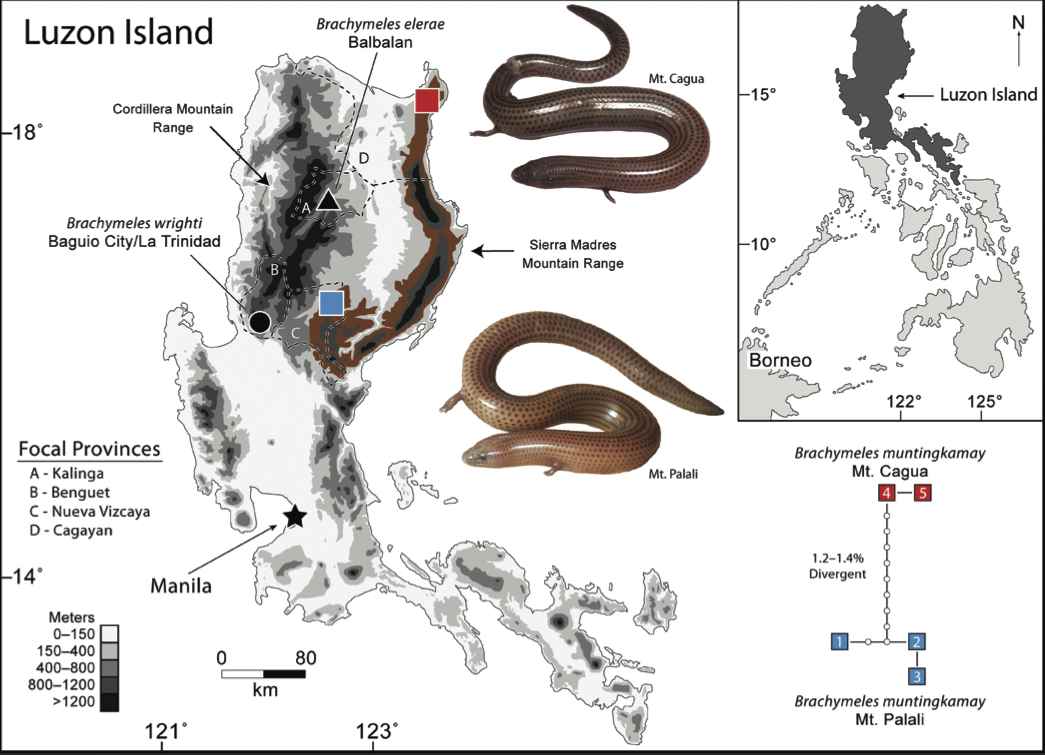Population Genetics and Biogeography of Tridactyl Skink

The genus Brachymeles represents a unique radiation of semi-fossorial (burrowing) lizards, all but two of which are endemic to the Philippines in Southeast Asia. This radiation represents one of the best systems for studying the evolution of limb reduction and loss; body forms within the genus range from pentadactyl (five digits per limb) to externally limbless. Over the last decade, 21 new species of Brachymeles have been discovered. Though these survey efforts have filled many gaps in our understanding of this radiation, many species with unique body plans are still underrepresented in collections and poorly understood.
Many of the species representing unique digit classes within the genus are micro-endemics, with recognized ranges currently limited to single sites. Several low-elevation species have persisted despite nearly complete deforestation across their limited ranges. B. elerae, B. muntingkamay, and B. wrighti all occur in the mountainous terrain of northern Luzon Island in the Philippines. All micro-endemic taxa are non-pentadactyl, with finger counts ranging from 3-5 and toe counts ranging form 2-4.
Brachymeles muntingkamay is one of 36 recognized species of Brachymeles and one of only four species known to possess three digits on the fore- and hind limbs. It is presumed to be endemic to a single, isolated mountain peak in the Caraballo Mountain Range of central Luzon.
A second montane (mountain-dwelling) population of this species was discovered in July 2011 in mid- to high-elevation forest on Mt. Cagua. With this new discovery, we present data on the genetic identity and structure between the two geographically disjunct populations, provide new photographic and morphological data for the species, revise the known geographic range of B. muntingkamay, and discuss the implications of this discovery for future research involving other unique (and possibly rare) mid- to high-elevation vertebrate species in the Philippines.
Both populations are recovered as genetically distinct, albeit with low genetic divergence observed between the two allopatric (isolated) populations. Characters of the newly discovered population are consistent with those of B. muntingkamay. Brachymeles muntingkamay is now recognized to occur in separate and distinct geological units of Luzon Island: the Caraballo and the Sierra Madres mountain ranges. Recent studies have indicated that many species of Brachymeles are able to cope with diminishing habitat quality and suitability, and we remain optimistic that future surveys will result in discoveries of more montane populations.
— Tucker Walton
Siler, C.D., L.J. Welton, A.A. Rock, and R.M. Brown. 2013. Population genetic structure and revised geographic range for the tridactyl skink (Brachymeles muntingkamay) from Luzon Island, Philippines. Herpetological Review 44(1): 30–33. pdf
